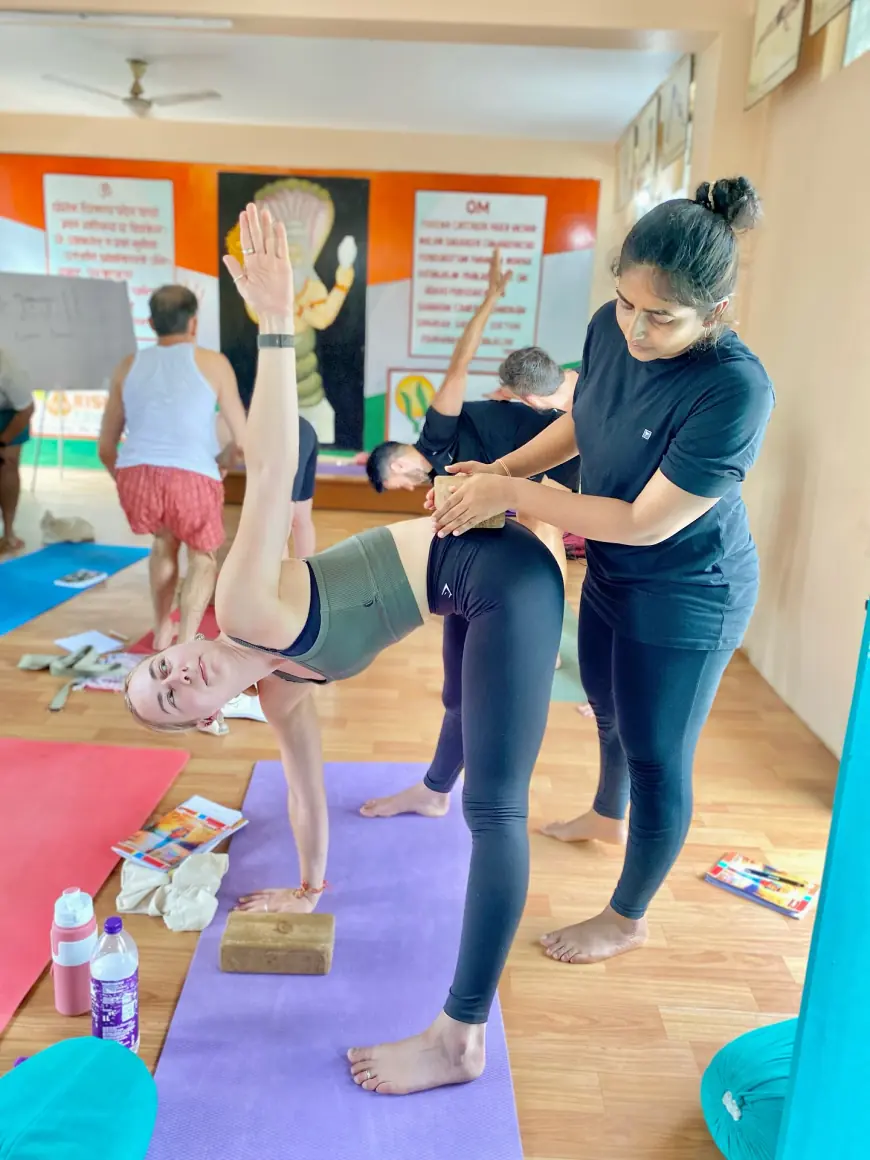Yoga Teacher Training in India: What You Need to Know Before You Begin
India is the spiritual birthplace of yoga — a land where ancient wisdom meets modern practice. For yoga practitioners around the world, coming to India for a Yoga Teacher Training Course (YTTC) is not just about getting certified. It’s a deeply personal, often transformative journey into the roots of yogic tradition.

India is the spiritual birthplace of yoga — a land where ancient wisdom meets modern practice. For yoga practitioners around the world, coming to India for a Yoga Teacher Training Course (YTTC) is not just about getting certified. It’s a deeply personal, often transformative journey into the roots of yogic tradition.
But before you pack your bags, there are a few important things to consider when choosing a yoga teacher training in India.
Why Choose India for Yoga Teacher Training?
Yoga was born in India thousands of years ago. Its philosophies, techniques, and teachings are still preserved in their most authentic forms in ashrams and schools across the country. Training in India gives you direct access to:
-
Traditional Teachings from experienced Indian yogis
-
Spiritual Environments like Rishikesh, Dharamshala, Kerala, and Mysore
-
Cultural Immersion that goes beyond just yoga postures
When you practice yoga where it originated, you're not just learning poses — you're stepping into a lifestyle.
How to Choose the Right Yoga Teacher Training
Not all YTTCs are created equal. To ensure your experience is safe, enriching, and fulfilling, here are key factors to evaluate:
1. Accreditation
Choose a school that is registered with Yoga Alliance (USA or International) to ensure global recognition of your certification.
2. Curriculum Quality
A proper 200-hour training should include:
-
Asana practice (Hatha, Ashtanga, or Vinyasa)
-
Pranayama and meditation
-
Yoga philosophy and ethics
-
Anatomy and alignment
-
Teaching methodology and practicum
Make sure the course balances physical, theoretical, and practical components.
3. Experienced Teachers
Look for experienced instructors with traditional backgrounds. Teachers who live and embody the yogic lifestyle will offer insights beyond textbooks.
4. Location and Setting
From the Himalayas to the beaches of Goa, each region offers a unique vibe. Choose based on your preference for quiet solitude, nature, or vibrant community.
5. Facilities and Accommodation
Your environment affects your learning. Clean accommodation, healthy meals, and a peaceful setting go a long way in supporting your transformation.
What to Expect During Training
Yoga teacher training in India is immersive and often intense. A typical day might include:
-
Early morning meditation and pranayama
-
Daily asana classes
-
Philosophy and anatomy lectures
-
Group discussions and teaching practice
-
Evening satsangs or chanting
This isn’t a vacation — it’s a soul-deep commitment to self-discovery, discipline, and service.
Things to Keep in Mind
● Cultural Sensitivity
India has its own pace and customs. Embrace the experience with an open mind and respect for local traditions.
● Health and Travel
Get basic travel insurance, stay hydrated, and follow food safety guidelines. Many schools provide Ayurvedic meals and filtered water.
● Inner Preparation
More than physical strength, yoga teacher training in India requires mental and emotional readiness. You’ll confront your limitations, break old habits, and return changed — in the best way possible.
Final Words
A Yoga Teacher Training India is more than just a certification — it’s an awakening. It challenges, uplifts, and guides you toward a deeper understanding of yoga and of yourself.
Whether your goal is to teach or to simply evolve on your path, India offers the kind of grounding and wisdom that modern trainings often lack. If your heart is called to the source, listen — your yoga journey is just beginning.

What's Your Reaction?
 Like
0
Like
0
 Dislike
0
Dislike
0
 Love
0
Love
0
 Funny
0
Funny
0
 Angry
0
Angry
0
 Sad
0
Sad
0
 Wow
0
Wow
0

















































